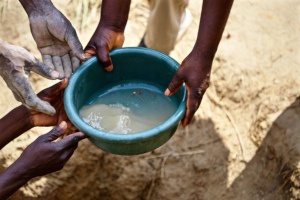Water-related diseases are one of the most common causes of illness and death in developing countries like Liberia. In fact, nearly 80 percent of illnesses in developing countries are linked to dirty water and unsanitary conditions. As water is essential to good health and wellbeing, it is important that we find ways to adequately filter and clean our water sources. While the U.S. is considered to have one of the safest drinking water systems in the world, many communities in Sub-Saharan Africa suer from poor drinking water access. Charities for Africa, such as The Last Well, are taking action to provide people in Africa with access to safe drinking water.

How Water is Cleaned and Filtered
Water purification and filtration is far different in highly developed countries like the United States than in developing countries like Liberia where clean water is scarce. Although water sources in the U.S. are vulnerable to certain contaminants like E. Coli, Cryptosporidium, Giardia intestinalis, Hepatitis A, and other pathogens, strict regulations help ensure that these contaminants are removed before ever reaching a faucet. With appropriate water cleaning and filtration, disease-causing agents can be removed to make the water safe to drink, cook with, or bathe in.
In the U.S., the most common steps in water treatment include:
Coagulation and Flocculation. These are the first steps in the water treatment process. During this step, chemicals are added to water which cause a positive charge that neutralizes the negative charge of certain pollutants and dirt. When this happens, the chemicals bind with the particles in the water to create larger particles known as floc.
Sedimentation. Floc then settles to the bottom of the water supply because of its weight. This process is called sedimentation.
Filtration. After sedimentation has occurred, all of the clear water on the top of the water supply is passed through filters. These filters have several compositions, such as charcoal, gravel, and sand. When passing through the filters, small particles like dust, viruses, bacteria, parasites, and chemicals are removed.
Disinfection. Once the water supply has been filtered, it is disinfected using a chemical like chlorine or chloramine. Disinfection is important to kill o any remaining viruses, bacteria, and parasites that may still be lingering in the water sources. The disinfection process also helps protect the water from germs when it is transferred to homes and businesses through pipes. While the process for cleaning and filtering water in the U.S. is stringent, many African nations do not have the same level of strictness. To simply get water for drinking, cooking, and bathing, many women and girls in Africa must travel for hours every day to water sources, wait in line, and carry buckets of water back to their home. This is often done several times a day. Water is often collected directly from ponds, streams, and rivers. In areas where water is very scarce, some may be forced to collect water from streams, ditches, and drains.
With no way to clean or filter the water, many people in Africa drink and use ground water without it being treated. As pollutants and contaminants are not removed, millions of people fall ill or even die after drinking dirty water. Some people in Africa do their best to try and purify the water before drinking it by heating it in a kettle. Boiling water can help kill or inactivate certain types of bacteria, viruses, protozoa, and other harmful pathogens by damaging structural components and disrupting life processes. Conventional water sanitation systems are expensive to build and maintain and are therefore non-existent in most parts of Africa.
Bringing Safe, Clean Water to Africa
The building of wells in Africa can help ease the continent’s water crisis. When built correctly and with the right materials, wells can maintain clean water that is free of pollutants and safe to drink without treatment. Providing wells in small villages offers people an effective way to gain access to quality drinking water and proper sanitation. There are many other advantages to building wells in Africa, including the reduction of water-borne illness. Dirty water usage accounts for approximately 50 percent of hospital beds in Africa which take precious resources that could be devoted to economic growth.
Rural areas throughout Africa continue to face major barriers in terms of clean water access. Water wells are a great solution for these rural areas as they can provide an entire village with clean water for many years. Wells can also foster gender equality. With access to wells, girls will no longer be forced to drop out of school for the responsibility of collecting water. This gives young girls the opportunity to obtain an education and contribute to their community in a meaningful way. For more information about how you can get involved with this cause, contact The Last Well today.







